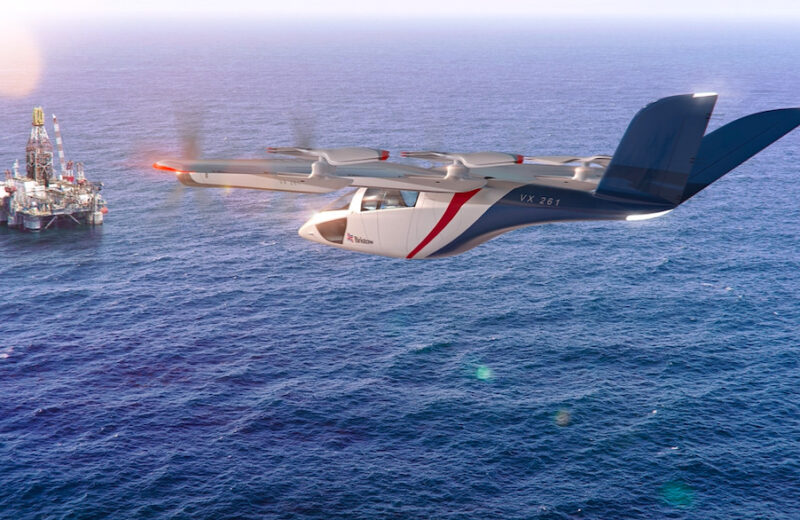HI Uplift: Will eVTOLs soar above helicopters?

March has been a great month for eVTOLs. Only this week, electric aircraft pioneer Vertical Aerospace claimed the world’s largest pre-order book by value in the eVTOL market totalling $5.4bn. So, perhaps now is a good time to ask: Will eVTOLs eventually out-compete helicopters and, if so, when?
Not for the foreseeable future, according to the industry insiders consulted by Helicopter Investor. But, over the longer term, that’s likely to change. At present, eVTOLS clearly lack both the range and the payload to be considered competitors. That means they are more likely to compete initially with traditional road transportation, says Sara Dhariwal, valuations manager at Ascend By Cirium. This would help solve the urban commuting challenge by easing congestion. But improvements in technology, such as battery efficiency, will sharpen the competition they offer helicopters.
“We predict there will be some time until eVTOLs, operated solely on electricity, will be able to carry out the same service as a twin-engined turbine helicopter,” Dhariwal tells Helicopter Investor (HI). “As the technology advances, there could be a competitive element with some of the lighter piston helicopters. It is probable that eVTOLs will not be a replacement of helicopters as such but will emerge as a market on its own.”
Steve Robertson, director, Air & Sea Analytics, believes eVTOLS will begin to compete with helicopters in a limited way over the next decade or two. The practical applications for eVTOLs in mission-critical rotorcraft markets are very limited, he tells HI. “In SAR [search and rescue] missions the ‘search’ part can be done with the use or assistance of eVTOLs or UAVs but I expect it will be a good couple of decades before anyone is heli-hoisting with large eVTOLs.”
Similarly in offshore crew transfer, most of the market (by value) is accounted for by aircraft weighing more than 6,000kg and it’s hard to see how eVOTLs will make an impact here. But there are applications for medium range transfer of tooling, parts and other supplies and potentially short-range crew transfer, says Robertson.
Dhariwal agrees unmanned drones are already successfully complementing helicopter services in areas such as SAR where they can efficiently carry out the search mission, while a helicopter is still required for the rescue. Another example is disaster relief, where drones have been proven to be a useful tool in delivering supplies to hard-to-reach areas, she says. Likewise, in the EMS sector drones have the ability to provide a more rapid response than traditional vehicles for certain missions.
A spokesman for Airbus Helicopters joins the chorus of approval for helicopters. Competition with classic helicopters will be limited in the foreseeable future, as eVTOLs are designed for a certain type of missions, mainly transport of passengers and goods between well-defined points of ground infrastructure, he tells us. “The main goal is to offer faster solutions than ground-based means of transportation. Missions which require higher performance, hover capability, or versatile vehicle, for example HEMS [helicopter emergency medical service], SAR, disaster relief or combat missions will be performed by helicopters with a thermal engine,” he says.
Airbus Helicopters highlights the potential of eVTOLS to offer emission free and quieter transportation capabilities for urban environments. Likely missions include: tourist flights, patient transport, medical personnel or medical goods between hospitals. “But if long endurance, extended hover capability, or heavy lift capacity or flights in adverse conditions are required, classic helicopters will be the means of choice,” he says.
Dhariwal, at Ascend By Cirium, points out most, if not all, traditional helicopter OEMs are already developing their own eVTOL/Advanced Air Mobility (AAM) programmes. “So, we expect to see more of a transitional shift to new technology rather than just remaining with existing technology,” she says. “Such a shift is something we have observed in the car manufacturing industry already with almost all the manufacturers now producing hybrid and electric cars.”
OEMS have no choice but to invest, says Robertson, at Air & Sea Analytics. “If you are a publicly-listed helicopter operator you need to demonstrate to investors that you are investing in the technology of tomorrow (so that your business isn’t going to become obsolete) and that you are engaged in energy transition,” he says. “eVTOLs tick both of those boxes and companies such as Bristow are actively engaged in this already and have been doing so for some time.”
Paul Malicki, CEO of charter app service Flapper doesn’t eVTOls will not overly harm the existing helicopter sector, but they might eventually replace standard premium transportation options. “When investors ask me ‘What is the market you are trying to replace with Flapper?’, my response is ‘Car rides in premium SUVs with over 2-3 hours in length (or more)’. That’s how long it takes to reach airports during heavy traffic or seaside resorts when you leave on a Friday evening.”
“When it comes to existing helicopter services, they are there to stay, at least for the upcoming decades,” added Malicki. (You can read more about his views on eVTOLS and AAM in the latest edition of CJIQ)
Robertson believes they will complement each other. “eVTOLs can do some of the missions of a helicopter at a lower cost and lower risk and, as I mentioned, the eVTOL transfer of parts & tooling and also search missions can (and already have, in some cases) complement rotorcraft well,” he says.
Dhariwal, at Ascend By Cirium, draws inspiration from the car industry. “Assuming that e-technology is indeed successfully developed, the car industry is likely to provide a measure of the challenges to make such aircraft mainstream, including regulatory requirements, infrastructure and indeed public acceptance,” she says. Dhariwal joins our other industry insiders in highlighting the opportunity of hybrid technology – at least until electric propulsion systems develop the range and payload capacity to really challenge helicopters and fixed wing aircraft.






